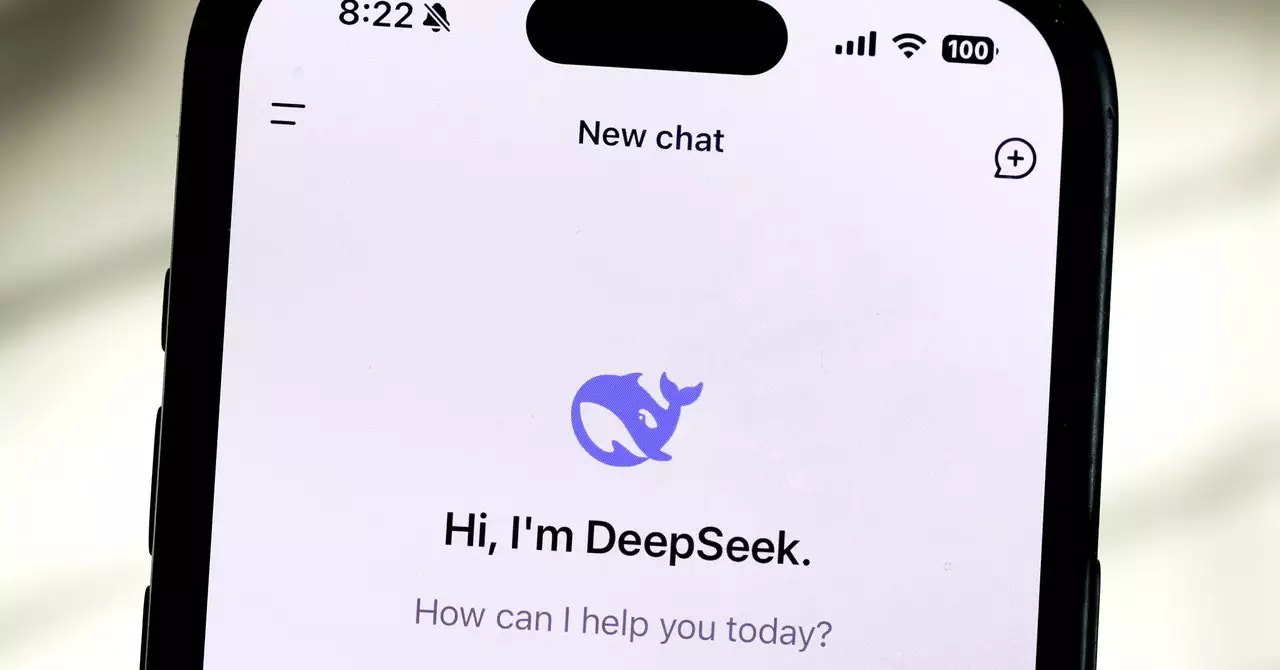As the realm of artificial intelligence continues to expand, the recent emergence of DeepSeek’s open-source AI model, DeepSeek R1, has ignited a flurry of discussion around its potential and implications. Founded in China, DeepSeek is not just another tech firm; it is at the heart of a complex interaction between advanced AI capabilities and stringent governmental controls. This article delves into the fascinating world of DeepSeek’s AI model, examining its strengths in mathematical reasoning and its controversial approach to censorship while exploring the broader implications for the future of artificial intelligence.
In less than two weeks following its release, DeepSeek R1 has swiftly risen to prominence, noticeably influencing the AI conversation globally. Despite feeling the heat from its U.S. competitors, DeepSeek appears to hold an advantage in intricate tasks such as mathematical reasoning and problem-solving. However, this technological prowess comes at a steep cost. DeepSeek’s proactive approach to censoring sensitive information has led to significant debate regarding the ethical implications of its model. The suppression of responses concerning politically charged topics, such as Taiwan or the Tiananmen Square protests, points to a broader concern: how does one reconcile advanced AI capabilities with state-imposed censorship?
The Mechanics of Censorship
The fundamental architecture of DeepSeek R1 integrates a level of self-censorship that is mandated by Chinese law. The requirements for AI models in China have become markedly stringent, enforcing an implicit understanding that dissent or politically delicate information must be managed. A WIRED investigation employed various testing environments to probe the model’s behavior, highlighting both the explicit censorship inherent in the DeepSeek app and the more profound biases woven into its neural fabric during training.
The censorship itself operates primarily at the application level, meaning users only encounter these limitations when interacting with DeepSeek through its official channels. Through user interfaces such as the Together AI platform or running the model locally via Ollama, aspects of this suppression can be circumvented. However, the systemic biases embedded in the model’s training remain a more complex issue. Researchers who wish to remove or alter these biases face a substantial challenge, suggesting that while censorship can be navigated, the foundational issues of bias in training data still need addressing.
The Implications of Open Source
The open-source nature of DeepSeek R1 presents a double-edged sword. On one hand, the ability for researchers to download and modify the model promotes innovation and customization, allowing users to sidestep the built-in restrictions. Conversely, the potential for misuse or irresponsible application raises ethical questions that demand to be addressed. As the model becomes accessible, the ease of modifying its outputs could lead to the widespread distribution of altered versions, ultimately diluting the efforts to maintain safe and responsible AI practices.
Such a scenario brings to light the current geopolitical tension surrounding AI technology and the rapidly shifting global landscape. Should international collaboration occur, the contrasting regulatory environments between China and the United States might yield a race to develop AI models that can maneuver through these regulatory hurdles. If the censorship on models like DeepSeek can be effectively stripped away by researchers, we might find a burgeoning market for highly adaptable, yet ethically questionable AI tools.
As DeepSeek gains traction, it remains crucial to assess whether the power of open-source AI can be wielded responsibly. The dissonance between the model’s impressive reasoning capabilities and its self-censoring nature reveals a vital dilemma. Developers and researchers are faced with the weighty responsibility of maintaining ethical standards while advancing the technological frontiers of artificial intelligence.
The case of DeepSeek serves as a cautionary tale of the potential risks associated with AI models that operate under stringent governmental scrutiny. While the allure of robust capabilities and customizable frameworks presents innovative opportunities, the stakes are high in the face of censorship and bias. Markedly, as AI continues to integrate into various facets of life, the actions taken by developers today will define the trajectory of future technologies.
DeepSeek R1’s rapid rise and the ensuing discourse symbolize a transformative moment in the AI landscape, filled with both promise and peril. Open-source structures allow for communication and collaboration that can foster groundbreaking advancements, but the underlying challenges posed by censorship and bias cannot be overlooked. As the global AI community evolves, it becomes imperative to find a balance where innovation thrives alongside accountability, ensuring that the technologies built today serve a beneficial future for all. The question remains: will AI models like DeepSeek empower or hinder progress in the long run? Only time will tell.

